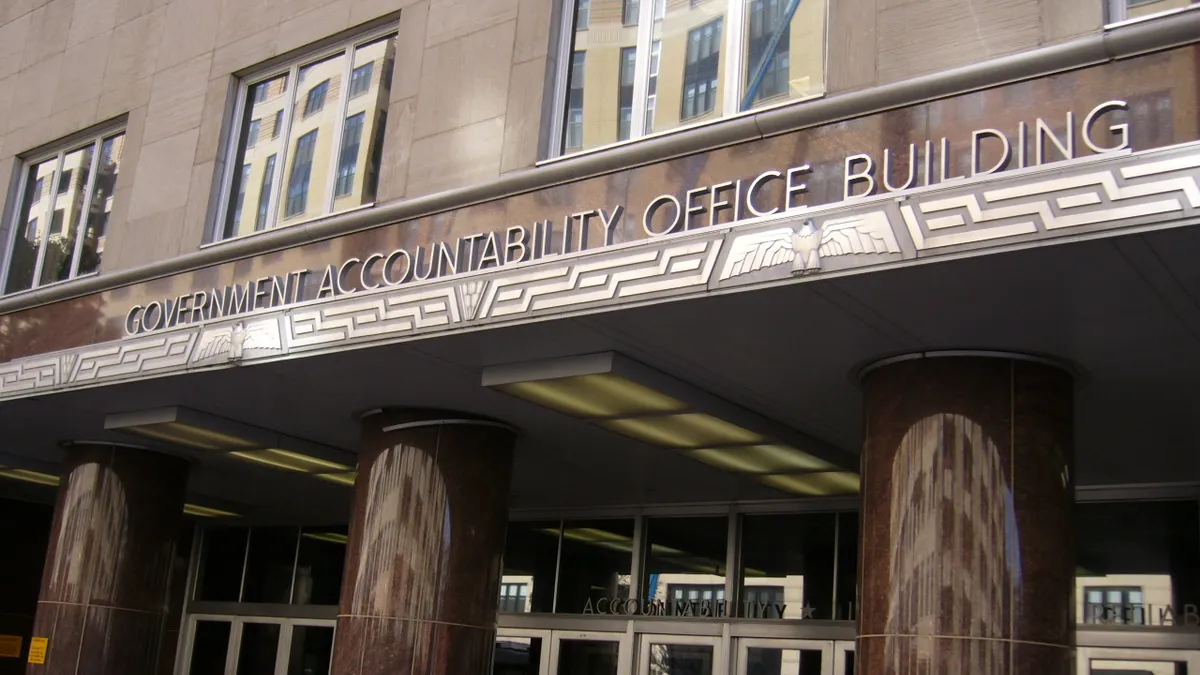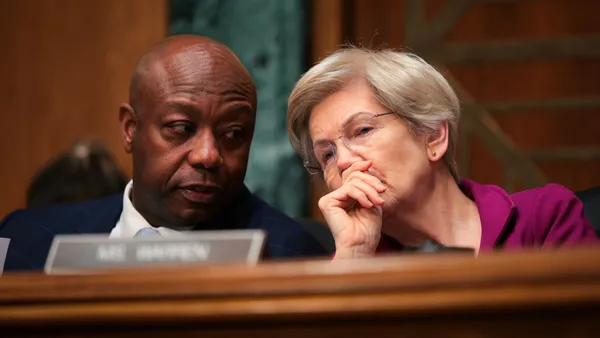Dive Brief:
- The U.S. Department of Education is slow to identify when a college closes and doesn't always provide students information they will need to obtain a closed-school discharge of their federal loans, a searing new report from a congressional watchdog found.
- The department took two months or more to identify a third of the colleges that closed between 2010 and 2020, according to the report, which the U.S. Government Accountability Office released Wednesday. It took six months or more to identify 13% of closures in that time frame, amounting to 135 institutions.
- The GAO recommended the Education Department find ways to identify closures in a timely way, provide guidance to loan servicers about the information they give on closed-school discharge, and reach out to at-risk borrowers who could be eligible for loan cancellation.
Dive Insight:
The closed-school discharge program allows the Education Department to cancel loans of students who were studying at institutions when they shuttered. It's been of high interest in recent years. The Obama administration issued regulations to automatically discharge loans for some borrowers whose colleges closed, but the Trump administration killed that rule.
Last year, the GAO found that almost all student loans discharged under the program were for those who'd attended for-profit colleges.
The office's new report focuses on whether the department "ensures timely and sufficient outreach to borrowers after a closure." It looks at federal laws and regulations, Education Department documents and documents from five different loan servicers. It also reflects interviews with agency and loan servicer officials.
Slow recognition when a college closes means borrowers often aren't informed about their discharge options until months later, limiting "the ability of students to make timely and informed decisions about their educational and financial options," the report said. It also said letters from three loan servicers they sent to borrowers lacked important information that would help them decide about applying for a discharge, such as eligibility criteria.
Education Department officials said they don't provide loan servicers with guidance on what should be in the letters.
The department has already changed some practices and is implementing others that will address the GAO's recommendations, according to a response letter from Richard Cordray, Federal Student Aid’s chief operating officer. It's also in the middle of rulemaking in which it's weighing granting automatic closed-school discharges to eligible borrowers who don't apply.
"When FSA learns of a college closure, it makes every effort to respond to the needs of students," Cordray wrote. "We recognize that with any process, including this one, there is always room for improvement."
Rep. Bobby Scott, a Virginia Democrat who chairs the House Committee on Education and Labor, issued a statement calling for improved processes.
"Unfortunately, the previous Administration abandoned the automatic discharge process put in place by the Obama Administration, adding to the confusion and distress students experience when their schools close," Scott's statement said. "In addition to restoring the automatic discharge process, the Biden Administration should implement the GAO’s recommendations and further streamline the process for students to ensure they can quickly access the relief to which they are legally entitled.”















